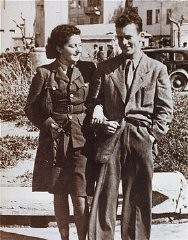You searched for: budapest
<< Previous | Displaying results 51-75 of 135 for "budapest" | Next >>
-
Tom Veres describes Wallenberg's rescue of members of the Swedish legation
Oral HistoryAfter the Germans occupied Hungary in 1944, Tom was ordered to work in labor camps and factories. He escaped after a few months and decided to contact the Swedish legation, where he met Raoul Wallenberg in October 1944. Tom stayed in Budapest and, using his training in photography, became active in Wallenberg's efforts to rescue the Jews of Budapest. He made copies of and took photographs for protective passes (Schutzpaesse), and documented deportations.
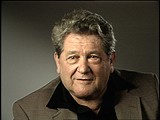
-
The War Refugee Board
ArticleThe War Refugee Board was formed in 1944 by executive order under President Roosevelt. It was tasked with the rescue and relief of victims of Nazi oppression.

-
Protective pass
PhotoA protective pass issued by the Swiss consulate in Budapest, for Chief Rabbi Joseph Katona. Budapest, Hungary, October 23, 1944.

-
Hungary after the German Occupation
ArticleThe Nazis invaded Hungary in 1944 to prevent the government from negotiating an armistice with the Allies. Learn more about conditions in occupied Hungary.

-
Alexander White
ArticleRead the Jewish Partisan Educational Foundation's short biography of Alexander White.

-
Surrender of German and Hungarian Units
Timeline EventFebruary 13, 1945. On this date, Soviet troops accepted the surrender of the last German and Hungarian troops in Budapest.
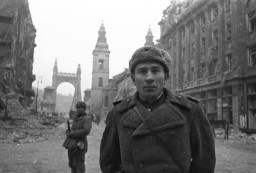
-
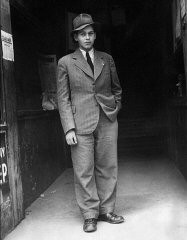
-
War Refugee Board: Activities
ArticleThe War Refugee Board was a significant US attempt to rescue and relieve Jews and other endangered people under German occupation. Learn about its activities.

-
Lea Ofner-Szemere
ID CardLea was born in the city of Sombor in northeastern Yugoslavia. When she was 3 years old, her parents divorced and she moved to Vienna with her mother, who taught English and French to Austrian children. Lea enjoyed living in Vienna as a child. 1933-39: Lea returned to Sombor almost every year to visit her mother's relatives. There, she became reacquainted with her younger half-sister, Julia, and her older half-brother, Francis, and would miss them when she returned to Vienna. In 1938, the Germans annexed…

-
Ghettos
ArticleGhettos separating Jews from the rest of the population were part of the Nazi plan to destroy Europe's Jews. Read about ghettoization during the Holocaust.

-
Lajos Nagy
ID CardThe Nagys were one of several Jewish families in Zagyvapalfalva, a town 45 miles from Budapest. They owned a general store that served the many coal miners in the mountain valley town. As a young man, Lajos served with the Hungarian army in World War I. He then studied in Budapest to be a diplomat, but a 1920 law restricting the number of Jews in certain professions kept him from pursuing his career. 1933-39: Lajos's father passed away. Lajos took over the general store in Zagyvapalfalva with his bride,…
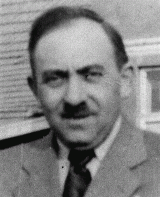
-
People crowded around an antisemitic "Pesti Ujság" newspaper display
PhotoVisitors view the exhibition of the Arrow Cross newspaper, Pesti Ujság, at the International Fair in Budapest. The headline reads: "For a Hungary without Jews." Budapest, Hungary, approximately 1941-1942. The Arrow Cross was Hungary's largest fascist political movement after 1935. In the 1939 parliamentary elections it won over 20% of the vote and had more than 250,000 members. Its ideology was ultra-nationalistic and fiercely antisemitic. The Arrow Cross viewed Jews as an "anti-national" "race"…
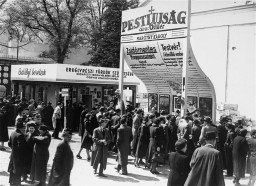
-
Food container lid
PhotoAluminum food container lid used by a Hungarian Jewish family on the Kasztner train. The family had used the container on outings outside Budapest. It later accompanied them to Bergen-Belsen, Switzerland and, finally, to the United States.
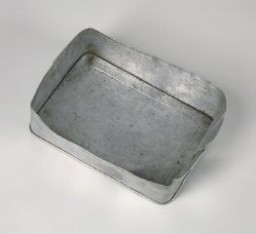
-
Agnes Mandl Adachi describes rescue activity on the banks of the Danube River and the role of Raoul Wallenberg
Oral HistoryAgnes was in Switzerland in 1939 to study French. She returned to Budapest in 1940. After the Germans occupied Hungary in 1944, Agnes was given refuge in the Swedish embassy. She then began to work for Swedish diplomat Raoul Wallenberg in his efforts to save the Jews of Budapest, including the distribution of protective passes (Schutzpaesse). When the Soviets entered Budapest, Agnes decided to go to Romania. After the war, she went to Sweden and Australia before moving to the United States.
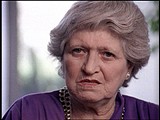
-
Agnes Mandl Adachi describes Raoul Wallenberg's efforts to save Jews from deportation
Oral HistoryAgnes was in Switzerland in 1939 to study French. She returned to Budapest in 1940. After the Germans occupied Hungary in 1944, Agnes was given refuge in the Swedish embassy. She then began to work for Swedish diplomat Raoul Wallenberg in his efforts to save the Jews of Budapest, including the distribution of protective passes (Schutzpaesse). When the Soviets entered Budapest, Agnes decided to go to Romania. After the war, she went to Sweden and Australia before moving to the United States.

-
Emanuel (Manny) Mandel
ID CardManny was born to a religious Jewish family in the port city of Riga, Latvia. Shortly after Manny's birth, his father accepted a post as one of the four chief cantors in Budapest and the family returned to Hungary, where they had lived before 1933. Manny's father was based at the renowned Rombach Street synagogue. Between the wars, Budapest was an important Jewish center in Europe. 1933-39: Manny's father wouldn't let him have a bicycle. He thought someone might take it away from him because he was…

-
Margit Nemeth Fekete
ID CardMargit was born to a Jewish family in the city of Szentes. In 1919 she married and had a son, Gyorgy. When Gyorgy was still a baby, Margit divorced, but she remarried several years later. Her new husband, Vilmos Fekete, worked as a manager in a large electric company in Ujpest, a suburb of Budapest. Margit settled there and her son stayed in Szentes with his grandparents. 1933-39: Margit and her son saw each other as often as possible. Margit would travel by bus to Szentes to spend the Jewish holidays…
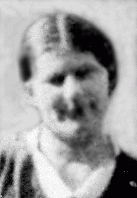
-
Erzsebet Markovics Katz
ID CardErzsebet was born to Jewish parents living in a town on the Bodrog River in northeastern Hungary. Sarospatak was a picturesque town with a ruined medieval fortress, the Windischgratz castle, and many wineries, flour mills, and brickworks. Erzsebet's father was a locksmith and sheet-metal worker. 1933-39: Erzsebet has married Jozsef Katz. It was a lovely, formal wedding. Jozsef comes from a large Jewish family. He's a joiner by trade and was working in Sarospatak when they met. Now they have moved here to…
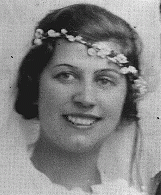
-
Rescue
ArticleRescue efforts during the Holocaust ranged from the isolated actions of individuals to organized networks both small and large.
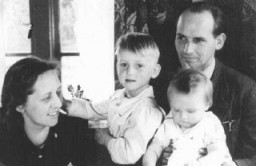
-
Eva Heyman
ID CardThe only child of a cosmopolitan Hungarian Jewish couple, Eva grew up in a city on the border between Romania and Hungary. Nearly one-fifth of the city's population was Jewish. Eva was a small child when her parents, Agi and Bela, divorced, and she went to live with her grandparents. 1933-39: After the divorce, Eva saw little of her mother, who remarried and moved to Budapest. She also rarely saw her father, who lived on the other side of the city. Eva lived with her grandmother and grandfather near the…
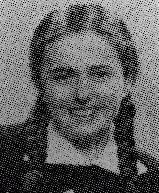
-
Hannah Szenes
PhotoHannah Szenes on her first day in Palestine. Haifa, Palestine, September 19, 1939. Between 1943 and 1945, a group of Jewish men and women from Palestine who had volunteered to join the British army parachuted into German-occupied Europe. Their mission was to organize resistance to the Germans and aid in the rescue of Allied personnel. Hannah Szenes was among these volunteers. Szenes was captured in German-occupied Hungary and executed in Budapest on November 7, 1944, at the age of 23.
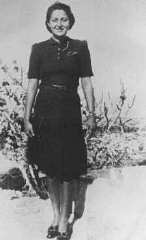
-
Brihah
ArticleBrihah was a postwar, clandestine movement that helped Jews emigrate from eastern Europe into the Allied-occupied zones and Palestine or Israel. Learn more.
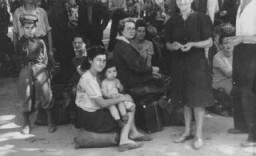
-
Jewish Parachutists from Palestine
ArticleLearn about a group of Jewish men and women from Palestine who parachuted into German-occupied Europe to organize resistance and aid in the rescue of Allied personnel
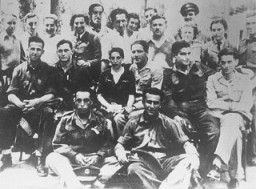
-
Jewish parachutist Hannah Szenes with her brother
PhotoJewish parachutist Hannah Szenes with her brother, before leaving for a rescue mission. Palestine, March 1944. Between 1943 and 1945, a group of Jewish men and women from Palestine who had volunteered to join the British army parachuted into German-occupied Europe. Their mission was to organize resistance to the Germans and aid in the rescue of Allied personnel. Hannah Szenes was among these volunteers. Szenes was captured in German-occupied Hungary and executed in Budapest on November 7,…
